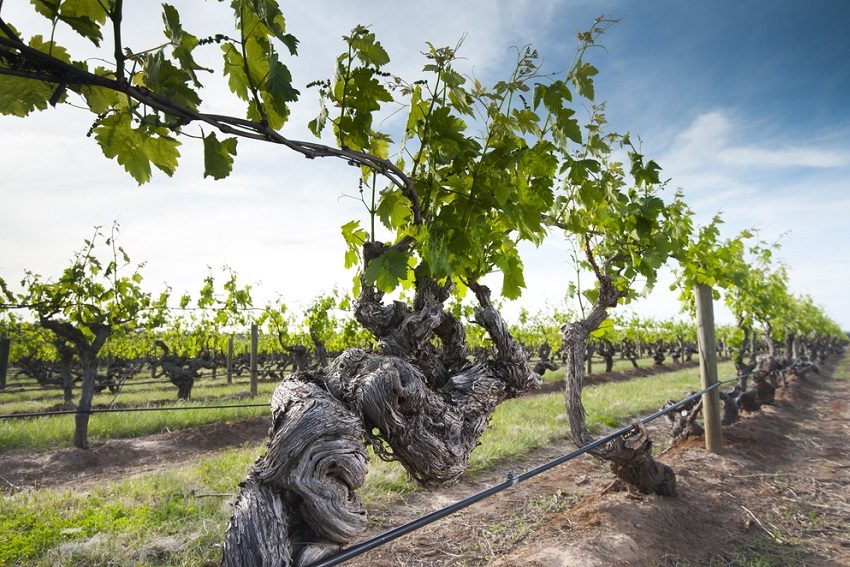Old Vines: How South Australia's wine story began

South Australia’s wine industry is the biggest in the country, but where did it all begin? Charles Gent unearths the roots of the state’s storied wine history, including a few household names and the wines that got them to where they are.
If you want to point to a specific wine, probably the best candidate for South Australia’s first commercial drop emanated from a vineyard near Mount Barker in 1843. Its maker, John Hack, called it his ‘Echunga Hock’.
The ambition to grow wine grapes was a distinctive aspect of the early history of nearly all of Australia’s colonial settlements, and South Australia was no exception. Vineyards were planted just beyond Adelaide’s square mile with alacrity — John Hack’s first vineyard in North Adelaide and another to the west, tended by imported German vine dressers Scholz and Stein, were flourishing as early as 1837. Hack’s Scottish gardener published a how-to manual on vine cultivation to offset the “totally inapplicable” advice of English texts.
He found an eager audience: the 44 colonists who formed the Vine Association in 1840 ultimately imported 50,000 cuttings from South Africa. Clippings came also from the New South Wales stocks of European varieties collected by James Busby, and from the vineyards of the Macarthurs at Camden Park.
In subsequent decades, vines sprang up on every side of the city, and by 1900 would include substantial tracts of vineyard in the foothills at Glen Osmond, Beaumont and Stonyfell, as well as around Dr Penfold’s Grange cottage at Magill. By then there were well established vineyards at Marion, Brighton and Underdale, and at Hope Valley and Tea Tree Gully. Early vines planted 25 kilometres to the south of the capital on the farm of John Reynell were making wine by the 1840s, and provided work for a new arrival from county Devon, one Thomas Hardy.

After stints of droving and gold prospecting, Hardy went on to plant his own vines beside the Torrens at Thebarton: he made his first wine in 1857, with production reaching 65,000 litres by 1865. Soon after, he snapped up the Tintara winery along with the McLaren Vale vines originally planted by pioneering vigneron and winemaker Dr Alexander Kelly. Hardy’s new enterprise was successfully harnessed to a nascent export trade with Britain, based on demand for hearty, “tonic” wines.
Further afield, Clare was an early adopter, with the region’s founding explorer, John Horrocks, putting in vines, though due to a fatal accident involving his gun and a camel, he never made wine. The fearsome local mayor and magistrate Edmund Gleeson made good, planting 550 vines on his Inchiquin property. A second wave of vignerons along the Valley included Buring and Sobels at Watervale, JH Knappstein of the Stanley Wine Company, AP Birks at Wendouree and the monks of Sevenhill.
To Clare’s east, a shrewd if malodorous German geologist named Josef Menge was quick to see the winemaking potential of the park-like Barossa Valley; his advice saw much of the land bought by banker and businessman George Angas. German religious refugees sponsored by Angas founded the village of Bethany, and by selling fruit from the vineyards of their mixed farms established a symbiosis between small growers and winemakers that became the dominant model for Australia’s most famous wine region.
A more prosperous migrant, Joseph Seppelt, arrived with a retinue of Silesian families and bought 60 hectares on the Barossa’s western side in 1850. Giving up on tobacco, Joseph turned vigneron and winemaker, selling his wines locally and to Victoria and New South Wales via Murray riverboat. His son, the boundlessly energetic Benno, doubled the size of the property and extended the imposing gravity-fed winery. Seppelt wines were a hit of the 1880 Sydney Exhibition. In that same year, the colony’s wine production sailed past the one million gallon (4.5 million litre) mark.

South of Seppeltsfield at Jacobs Creek, a Bavarian migrant farmer and his son, Johann and Gustav Gramp, were also creating wines of quality at their Orlando winery. To the north, near Angaston, an English brewer named Samuel Smith worked day and night to establish a market garden and vineyard, later expanded with funds from a foray to the Victorian goldfields. At the end of the century, S Smith & Sons’ Yalumba winery boasted 40 hectares of its own vines and crushed grapes from 60 small growers.
There were, inevitably, some snags: markets for South Australian wine, thanks in part to pre-Federation inter-colonial tariffs, were uncertain, and the custom of British wine merchants could be capricious. A flood of inexperienced vignerons in the 1870s led to issues of poor quality and oversupply, causing a major shakeout. But numbers of 19th century winemakers, including still-familiar names and labels such as Woodley, Basedow and Angove, persisted and prospered.
Many turn-of-century colonial wine styles might have had little appeal to modern palates, with sweetness and strength at a premium; table wines were often preserved with the addition of spirit. But a notable few were winning favour for their dryness, elegance and quality. And, on a surprisingly modern note, on a hot day in Adelaide a thirsty citizen could buy a glass of iced claret at Hardy’s wine bar in Grenfell Street.
When journalist Ernest Whitington reported on the 1903 vintage, South Australia’s crush had passed two-and-a-half million gallons (more than 11 million litres). Even as some of the earliest vineyards disappeared under housing subdivisions, the newly-minted state, with its phylloxera-free vines, was the country’s largest wine producer, and clearly headed for bigger things.
This article first appeared in Hot 100 Wines 2017/2018, now available on the street